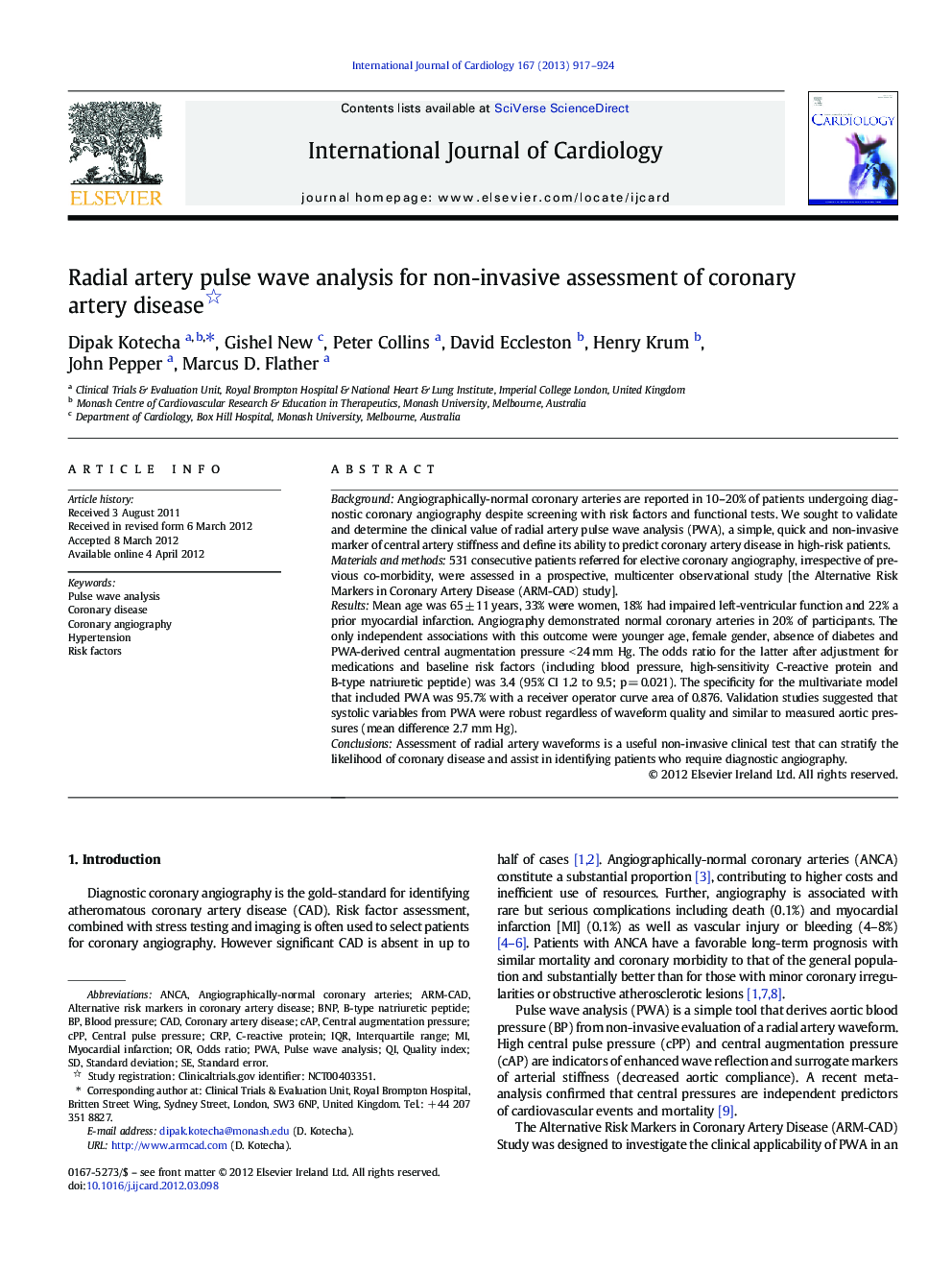| Article ID | Journal | Published Year | Pages | File Type |
|---|---|---|---|---|
| 5974837 | International Journal of Cardiology | 2013 | 8 Pages |
BackgroundAngiographically-normal coronary arteries are reported in 10-20% of patients undergoing diagnostic coronary angiography despite screening with risk factors and functional tests. We sought to validate and determine the clinical value of radial artery pulse wave analysis (PWA), a simple, quick and non-invasive marker of central artery stiffness and define its ability to predict coronary artery disease in high-risk patients.Materials and methods531 consecutive patients referred for elective coronary angiography, irrespective of previous co-morbidity, were assessed in a prospective, multicenter observational study [the Alternative Risk Markers in Coronary Artery Disease (ARM-CAD) study].ResultsMean age was 65 ± 11 years, 33% were women, 18% had impaired left-ventricular function and 22% a prior myocardial infarction. Angiography demonstrated normal coronary arteries in 20% of participants. The only independent associations with this outcome were younger age, female gender, absence of diabetes and PWA-derived central augmentation pressure < 24 mm Hg. The odds ratio for the latter after adjustment for medications and baseline risk factors (including blood pressure, high-sensitivity C-reactive protein and B-type natriuretic peptide) was 3.4 (95% CI 1.2 to 9.5; p = 0.021). The specificity for the multivariate model that included PWA was 95.7% with a receiver operator curve area of 0.876. Validation studies suggested that systolic variables from PWA were robust regardless of waveform quality and similar to measured aortic pressures (mean difference 2.7 mm Hg).ConclusionsAssessment of radial artery waveforms is a useful non-invasive clinical test that can stratify the likelihood of coronary disease and assist in identifying patients who require diagnostic angiography.
